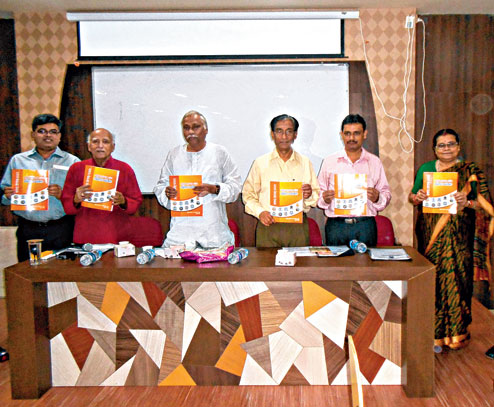Font problem hits Odia
-
Access to Knowledge
-
Openness

9 April 2024

A report on computer applications in Odia being released at Institute of Technology Education and Research in Bhubaneswar on Sunday. Telegraph picture
The article by Bibhuti Barik was published in the Telegraph on July 7, 2014. Subhashish Panigrahi gave his inputs.
The available Odia fonts that could be used for digital publications have compatibility problems. The fonts, which number around 10, have been developed for specific purposes and cannot be used in all applications.
Computer application researchers, linguistics, information technology experts and educationists, who met at a workshop here today, urged the state government and the IT industry to ensure the smooth use of Odia fonts.These fonts are available on different software tools, but if one purchases one of them to install on his or her computer, it fails to open in another system. Since this happens due to lack of compatibility, it also discourages users to use Odia fonts in official work and day-to-day life.“I think the use of Odia language in computers is restricted only to desktop publication (DTP). As the compatibility factor has come as a major handicap, the use is becoming more restricted in day-to-day life. The state government should come forward to facilitate a software so that the fonts can be used through a uniform system,’’ said linguist and founding director of the Mysore-based Central Institute of Indian Languages, Debi Prasanna Pattanayak.Subhashish Panigrahi, a Bangalore-based IT professional who is now working on a project for Wikipedia Foundation, said: “Different fonts in Odia came to existence quite late and all were based on the skeleton of Latin fonts so that when one types an English font on the keyboard, the screen shows an Odia font. Later, unicode fonts were developed, which were not only compatible to the Internet, but had elements common with other Indian languages as well.”Odia publishers did not agree to use the unicode fonts as they were using customised softwares. For this reason, the published books and literature fails to reach the Internet.In 2011, Srujanika, a city-based organisation, developed a converter to use fonts from other categories to unicode type.Sujata Patel, chief operating officer of Pune -based Tech Z Solution, said: “The affordability of Odia tools and fonts is a major concern. As they are developed by non-Odia professionals, the aesthetic aspect of Odia fonts and characters are not being taken into consideration.”
Subrat Prusty, member secretary Institute of Odia Studies and Research, said: “Odia is yet to come to the computer screen on different software tools which are used for tables, Internet applications, medical, engineering and business applications.”“Despite having hundreds of engineering colleges, two technical universities and 10 universities we are yet to use Odia in computers,” Prusty added.Researchers from US, Singapore, IITs, central universities, IT professionals, linguists, artistes, educationists and students of computer applications took part in the workshop that was organised at the computer science department of the Institute of Technical and Education and Research of Sikhya O Anusandhan University.